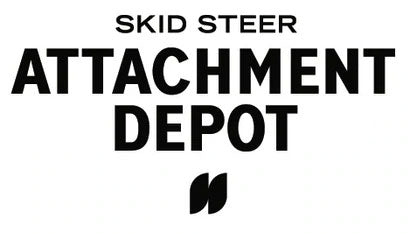Skid Steer Vs. Tractor
In terms of a skid steer vs. tractor, there are a variety of differences in terms of size and use.
Heavy machinery is an investment. Both skid steers and tractors both run from ten to sixty thousand dollars depending on size and power. Regardless of the size of the enterprise, these machines are a serious investment and purchasing one that doesn't fit your needs can be costly. Below, we will go through the similarities and differences of skid steers and tractors and our suggestions for their use.
The Skid Steer
Developed in 1958, the skid steer is a compact zero-turn machine typically used with a bucket loader. The skid steer's compact design has made it a staple of small construction sites and farms when maneuverability inside barns is needed.
Because skid steers put so much weight in such a small frame, they are not well suited for loose terrains like mud or sand. Additionally, the skid steer's ability to turn in place chews up turf much more so than a traditional-wheeled vehicle. For this reason, they tend to be used less in areas with manicured lawns.

The skid steer's compact design has made it a staple of small construction sites and farms when maneuverability inside barns is needed.
These are front-focused machines. As such, any attachments will sit in front of the driver. From a safety and control perspective, having a "brush hog" or mower attachment in front of the machine gives the operator more accuracy when mowing while not running the risk of getting hung up or an unseen rock or stump.
Skid steers are considered a more user-friendly machine, requiring minimal driving experience to handle one competently. If multiple people are operating the machine, the skid steer will have an advantage. A majority of attachments for skid steers will work on any skid steer. These require more effort to install between physically attaching them to the arms and the hydraulic lines.
The Tractor
Tractors range in size from glorified ride-on mowers to massive farm rigs. In an attempt to compare apples to apples, we are sticking with the mid-sized units suited for general purpose work around a job site or farm.
Tractors are suited for outdoor work, as they have a much wider turning radius than a skid steer. One bonus of the traditional turning radius is the tractor won't chew up the turf as much as a skid steer.

Tractors range in size from glorified ride-on mowers to massive farm rigs.
Tractors have two points where you can mount implements. Front-mounted accessories are hooked to the lift arms and hydraulic lines of the tractor. Examples of these mounts would be the bucket, hay spears, or lift forks. Since a tractor's lift arms extend in front of the machine, the operator should always be conscientious of the weight of their load.
The second mount for a tractor is on the rear of the machine. It’s typically made of a three point hitch and the implement may be powered by what’s called a Power Take-Off or PTO. The PTO connects to the drive shaft of the tractor and powers the unit pulled behind it.
A few examples of attachments would be manure spreaders, bush hogs, and hay balers. Tractors offer more ability than skid steers. More power means tractors are faster than skid steers. If you are planning on towing anything, the tractor is the machine to pick.
Tractor attachments, depending on the size of the machine, thus the category hitch on the tractor, are relatively the same. Again, make sure the ratings between the attachment and your tractor add up.
Skid Steer Vs. Tractor
Both the skid steer and tractor have differing strengths with an ability to handle a host of tasks that would be the norm on a farm or job site. For someone looking to add a new machine to their lineup, a list of needs and wants would serve them well. Space, total work area, and terrain are vital factors that can direct the buyer to one or the other.
If snow removal or scooping manure out of a barn are everyday tasks, then the skid steer is likely to win. Suppose seeding and mowing are your needs, then the tractor will get the job done faster.




